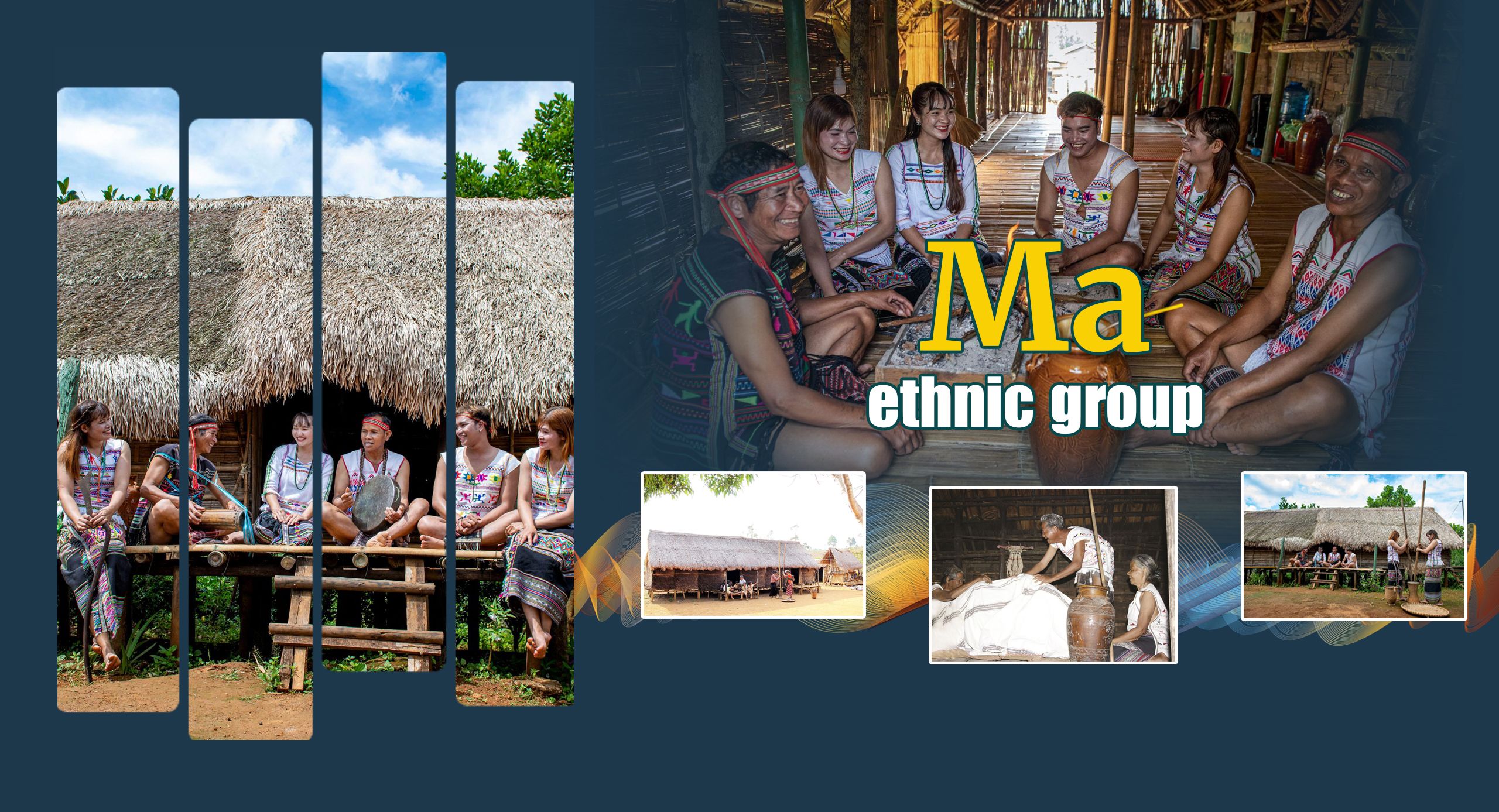
The Ma people are long-time residents of the Central Highlands. The Ma ethnic people live mainly on farming, so they still keep many customs, beliefs, and culture, imprinted with their identity.
1. Historical origin
The Ma people are a long-standing ethnic minority in the South-Central Highlands.
In terms of self-names, the Ma people have a way of distinguishing according to their residence areas such as Ma Blao, Ma Da Dong and Ma Da Huoai, and by local groups, including Ma Ngan, Ma Xop, Ma To and Ma Krung.
2. Population
According to census data of 53 ethnic minorities on April 1, 2019, the total population of Ma people reached 50,322. Of whom, 24,401 are male and 25,921 are female. Household size: 4.6 people/household.
3. Geographical distribution
The main residence of the Ma is from the area bordering the Da Lat plateau in the districts of Bao Lam, Bao Loc, Da Huoai, Duc Trong and Di Linh, Lam Dong Province, and a part of the buffer zone of the Cat Tien national forest to the southwest, Binh Phuoc and Dong Nai Provinces.
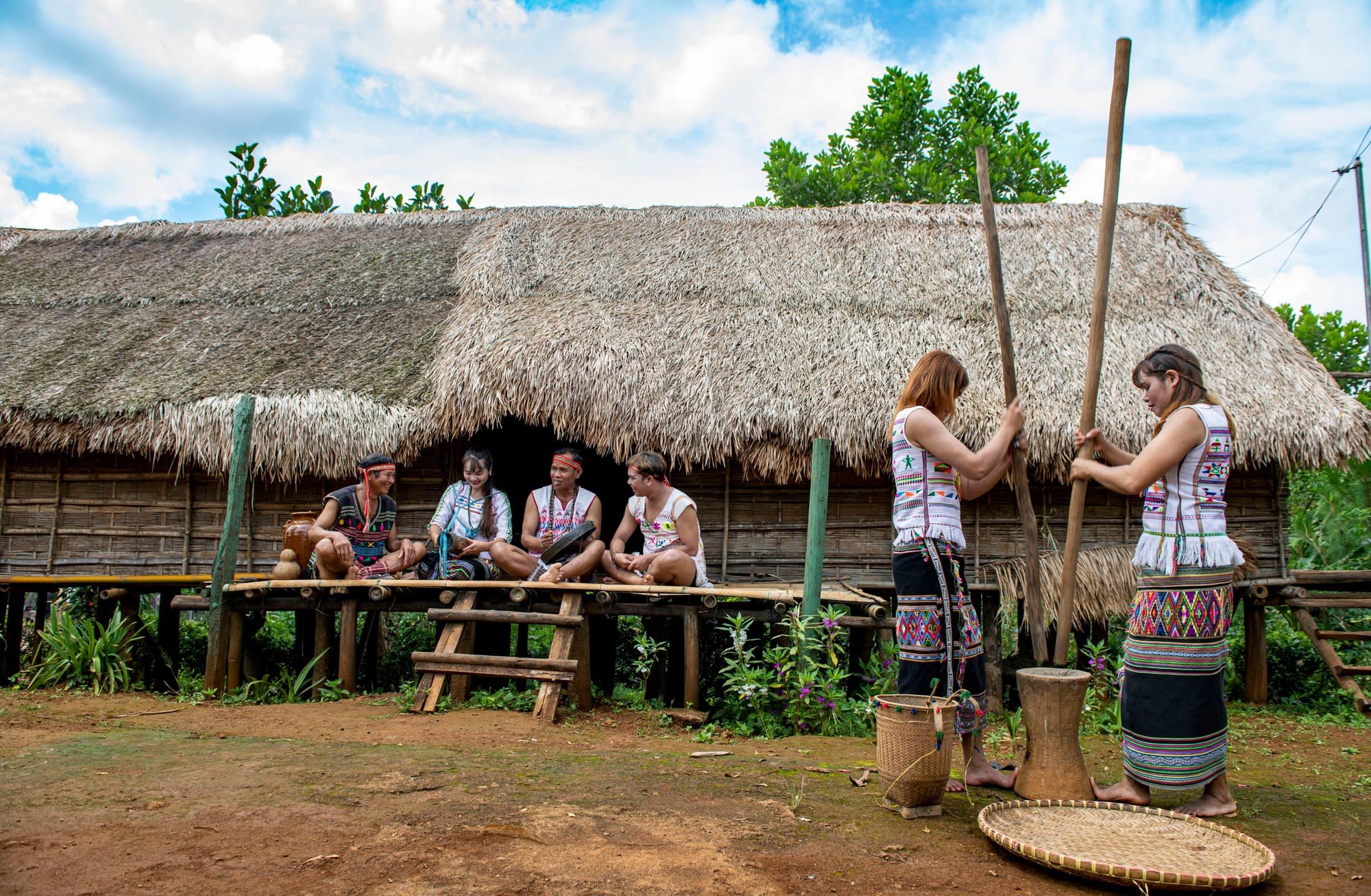
Ma people (Lam Dong) and their traditional long house (Photo: THANH DAT)
Ma people (Lam Dong) and their traditional long house (Photo: THANH DAT)
4. Language
The Ma belong to the Austroasiatic language family, the Mon-Khmer language group, close to the languages of Mnong, Choro, Xtieng and especially the Coho. The Ma people do not have their script. After 1975, children of the Ma ethnic group could go to school to learn Vietnamese.
Education: According to census data of 53 ethnic minorities on April 1, 2019, the rate of people aged 15 years and older who can read and write reached 70.8%. The proportion of people at the primary level is 100.1%, people at lower secondary schools is 77.6%, and people at high school is 33.3%. Meanwhile, the rate of out-of-school children is 24.4%. 20.1% of the Ma ethnic group aged 15 and over can read and write the Ma script.
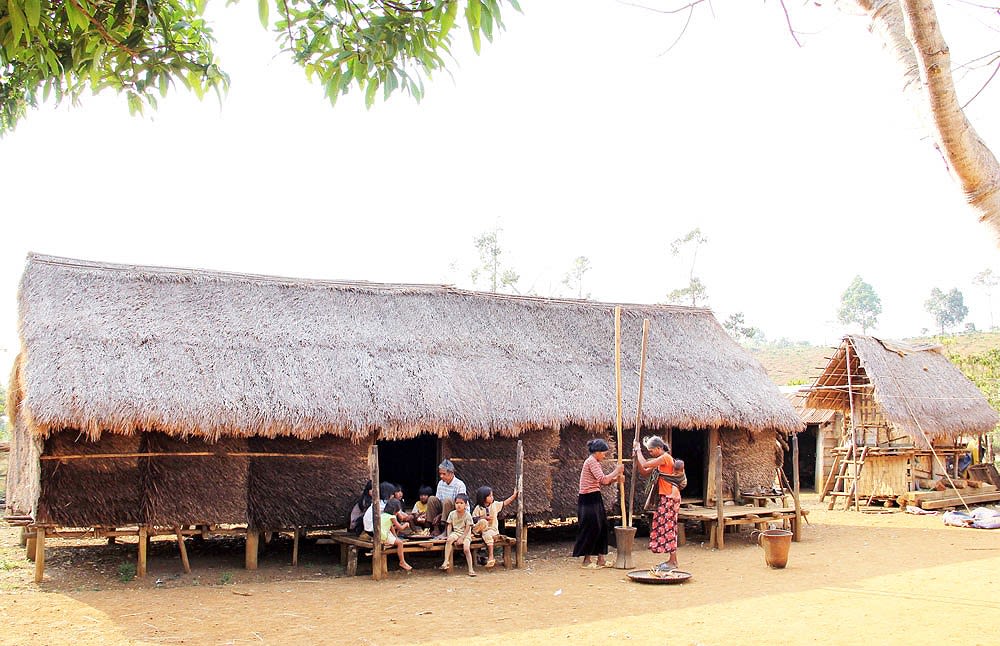
The only remaining ancient Long House of the Ma people in Lam Dong. (Photo: MAI VAN BAO)
The only remaining ancient Long House of the Ma people in Lam Dong. (Photo: MAI VAN BAO)
5. Main features
Housing: Previously, the Ma lived in long houses, with about 20-30 households living together. Each longhouse can represent a family line. Every time a new family is established, they make another house on either side of the main house, between the rooms without partitions.
Calendar: Ma people have their agricultural calendar according to the cycle of cultivation and based on the moon phase.
Belief: Traditionally, the Ma follow polytheistic beliefs. Gods (Yang) are supernatural forces that govern human life. There are many kinds of gods such as the Mountain God (Yang Bo Nam), the God of House (Yang hiu), the God of Rice (Yang koi), and the God of River (Yang da). They often kill animals as sacrifices on occasions of harvest, birth, sickness, and death. The biggest sacrifice ceremony is the buffalo stabbing ceremony, usually performed at the end of the farming season, to thank God for a bountiful harvest and pray for a good crop next year.
Traditional costumes: Men wear loincloths, and women wear close-fitting long dresses.
Men's loincloths are long: short, and simple, with a dark indigo colour and two simple lines along the edge. Men and women both have pullovers, men's are usually a little wider, and open, and the back flap is longer than the front flap and covers the buttocks. The Ma people have a custom of brushing their teeth, and stretching their ears, and women like to wear colourful beads. Currently, the custom of brushing teeth and straining ears is no more.
Traditional musical instruments: The traditional musical instrument of the Ma people is a set of six brass gongs without knobs. When the ensemble has drums covered with buffalo skin, hit the head with the spear, keep the beat and drop the act before the end. Besides the gongs, there are only bamboo trumpets, gourds, lip lutes, and stone lutes.
Ma people still preserve legends, fairy tales, Ma folk songs (yal yau), stories, gong culture, B'Da stone instrument, Ma epics, folk songs and folk dances with magical songs: K'Use -K'Lang and Sêm N'Drao. Currently, only about 4.4% of Ma people know how to sing traditional songs and 1.2% know how to play traditional musical instruments.
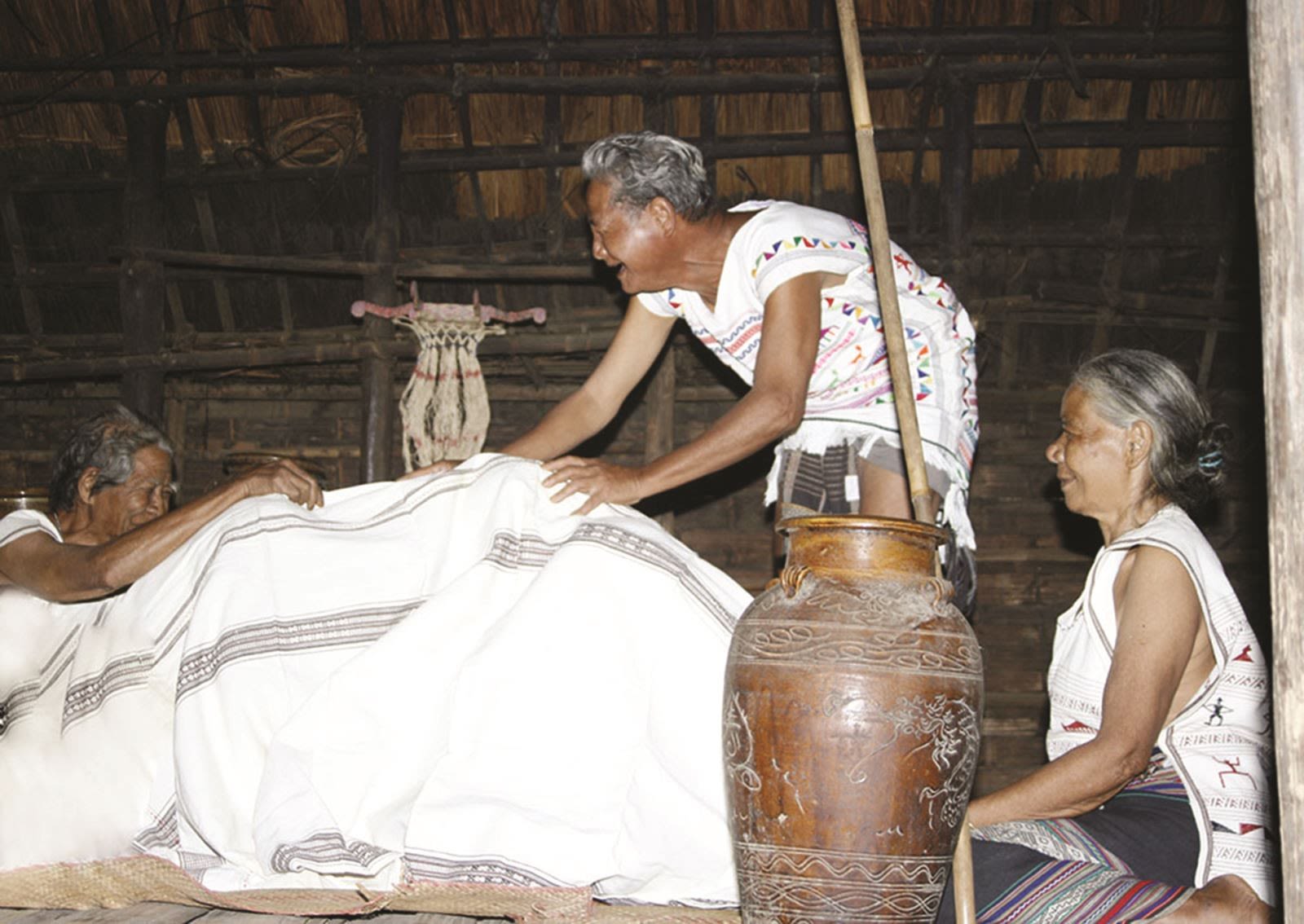
The meeting ceremony for the bride and groom is considered the most important in the wedding ceremony of the Ma. (Photo: Arts and Culture Magazine)
The meeting ceremony for the bride and groom is considered the most important in the wedding ceremony of the Ma. (Photo: Arts and Culture Magazine)
Social relations: The village is the highest social organisation of the Ma ethnic group headed by the village owner (tossing bon). The village owner is responsible for making sacrifices in community-based rituals. Ma people exist in two types of families: large patriarchal families and small patriarchal families. The head of a large family is the oldest of the oldest generation in the family, responsible for running all the household chores and taking care of rare items such as gongs and jars.
Marriage: According to Ma's convention, relatives can still get married, but must be at least 3 generations. Ma boys and girls have equal rights to get to know each other. The Ma's post-marital residence regime is in favour of the husband's residence. However, after the wedding ceremony, the husband has to stay at his wife's house for a few years, if the family is poor, he can stay longer. If he pays the bride price in full, he only needs to stay at the girl's house for 8 days.
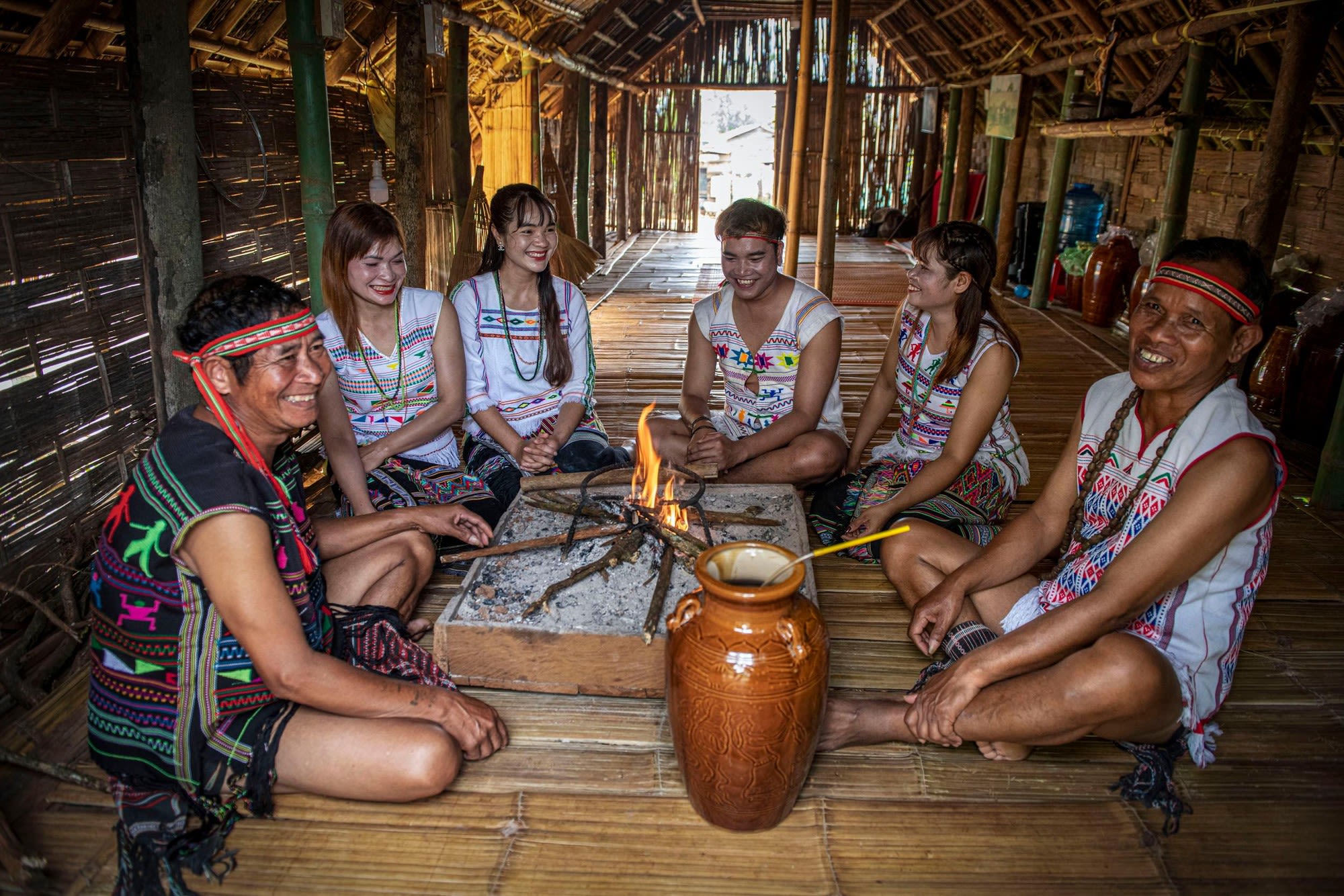
Photo: THANH DAT
Photo: THANH DAT
6. Economic conditions
In the past, shifting cultivation played a major role in the life of the Ma. Today, agricultural production, typically the types of cultivation of the Ma, has profoundly changed in almost all aspects, such as plant varieties, application of science and technology, and marketization of crop products. Today, the Ma people no longer hunt wild animals but develop commercial fish, cattle and poultry farming. The Ma are famous for growing cotton and weaving.
According to census data of 53 ethnic minorities on April 1, 2019: The rate of poor households was 14.1%, the rate of near-poor households was 7.7%; the Unemployment rate in the Ma community was 0.48%; the Rate of trained workers with degrees and certificates was 3.7%; Proportion of labourers working in the non-agricultural sector was 8.8%; Proportion of households doing traditional crafts was 1.02%.